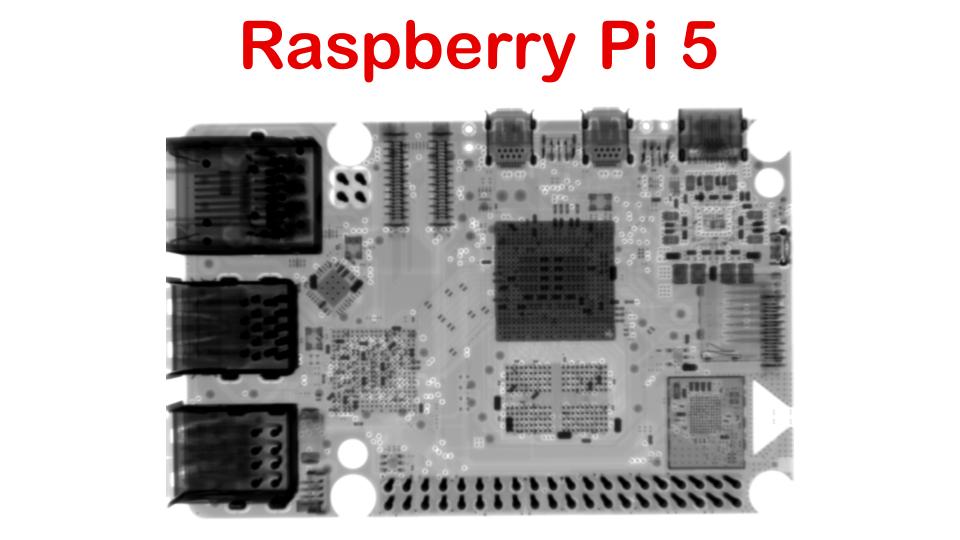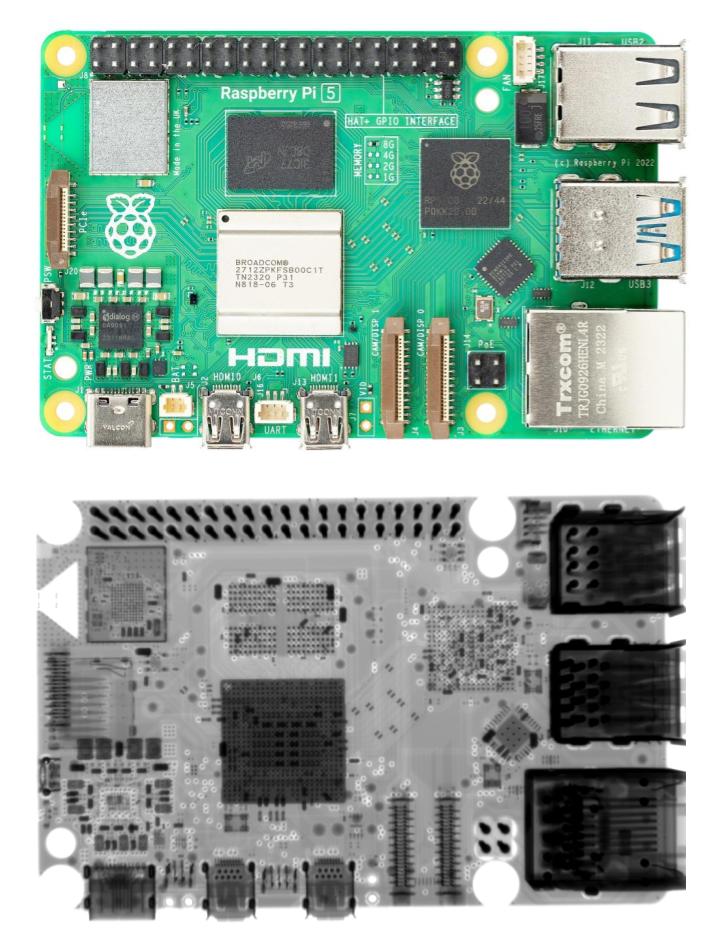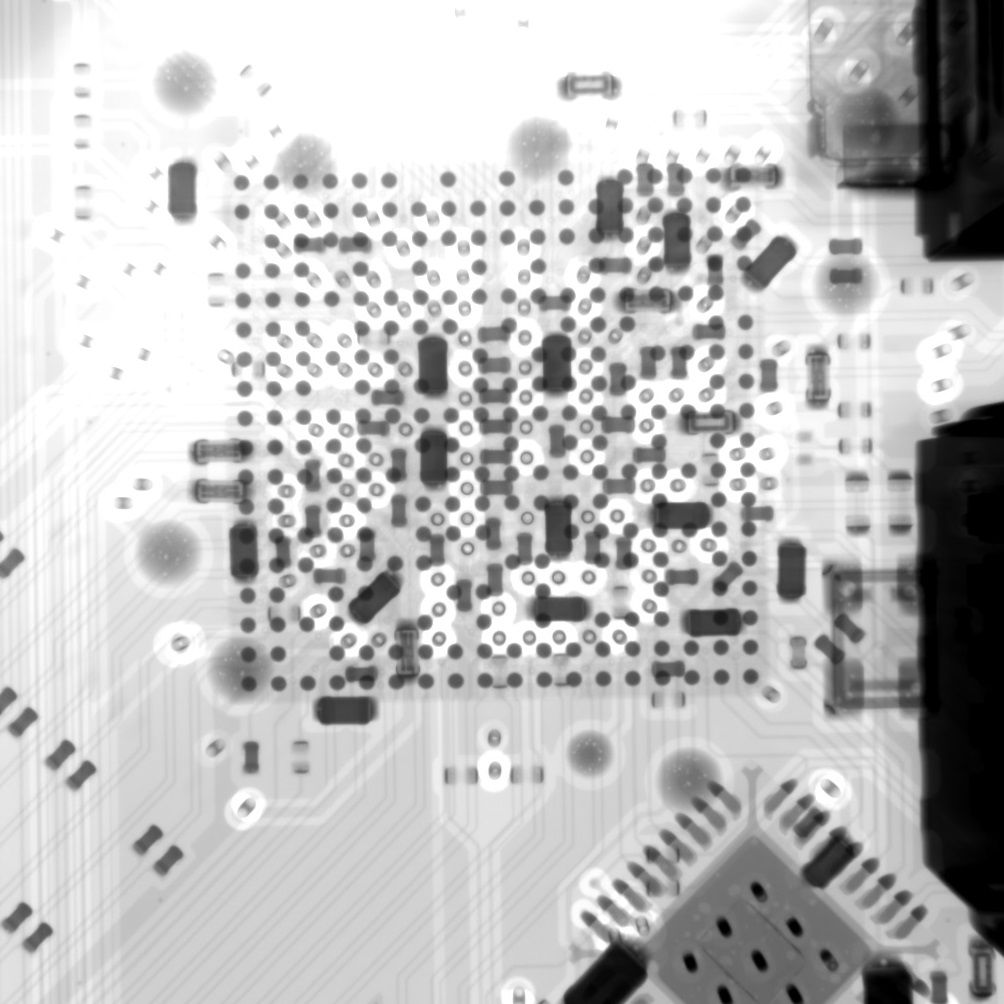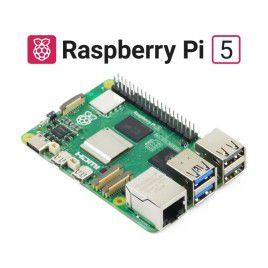Your shopping cart is empty!

X-ray of Raspberry Pi 5 - Look inside the 1st Raspberry Pi Silicon Project - RP1
The long-awaited Raspberry Pi 5 was announced (28th September 2023). From the announcement by Eben Upton (Raspberry Pi Trading's CEO), we know Raspberry Pi 5 comes with the 1st Silicon project they have been working on since 2016, RP1.
Thanks to ViTrox Technologies for helping to take an X-ray image of Raspberry Pi 5. It's cool. Here is the look of Raspberry Pi 5 and its X-ray image:

Raspberry Pi 5, normal human eye (top) and X-ray (bottom)
RP1: The 1st Silicon Project by Raspberry Pi
Eben Upton also explained the development of RP1 spanned over seven years and cost 25 million USD. This is the IO controller hub of Raspberry Pi 5, a.k.a: Southbridge on the computer motherboard. To know more about the RP1, please feel free to read the article here. Of course, you can also watch this video:
Let's take a closer look at RP1:

Those darker dots are the BGA pads. Can anyone spot any "easter egg" in the RP1 silicon?
RP1 (One, not capital i) is a powerful IO hub, relieving high-speed and low-speed digital interfaces, and analog outputs from the main processor, BCM2712. On Raspberry Pi 5, the RP1 handles:
- 1 x Gigabit Ethernet MAC
- 2 x USB 3.0 Host Controller, each host controller extends to 1 x USB3.0 port + 1 x USB2.0. Hence, the 2 x USB 3.0 port + 2x USB 2.0 port on Raspberry Pi 5.
- 2 x MIPI (4-lane MIPI transceiver) interfaces that are then extended CAM/DISP0 and CAM/DISP1 sockets for cameras or displays.
- 1 x SDIO which is in charge of the microSD card as the main storage interface.
- The 40-pin GPIOs (UART, SPI, I2S, PWM, and Digital Input and Output), are 3.3V-failsafe.
- 1 x Composite Video output, which was taken out from the 3.5mm jack and now is extended out to two header pads (right between MIPI sockets and micro HDMI ports)
The RP1 is then connected to the main processor, BCM2712 via 4 lanes of PCIe Gen2 bus.
With RP1, Raspberry Pi 5 offers:
- Offer simultaneous 5Gbps transfer speed for both USB 3.0 ports. Raspberry Pi 4 Model B offers a shared 5Gbps for 2xUSB 3.0 port.
- With the 4-lane MIPI transceiver, you will get:
- faster transfer rate for both display and camera
- option to have two cameras or two displays or one each at a time!
- Faster microSD card speed - supports SDR104 mode. You should get better sequential write, random read and write speed with your microSD card. Of course, the microSD card must also support SDR104 mode (MakerDisk microSD cards support SDR104). This translates to faster boot time, and data logging.
Can't wait to try Raspberry Pi 5? Get one from here.

Related Products
Raspberry Pi 5 Computer with 8GB RAM
RM409.00
Raspberry Pi 5 Computer with 4GB RAM
RM309.00
 International
International Singapore
Singapore Malaysia
Malaysia Thailand
Thailand Vietnam
Vietnam

